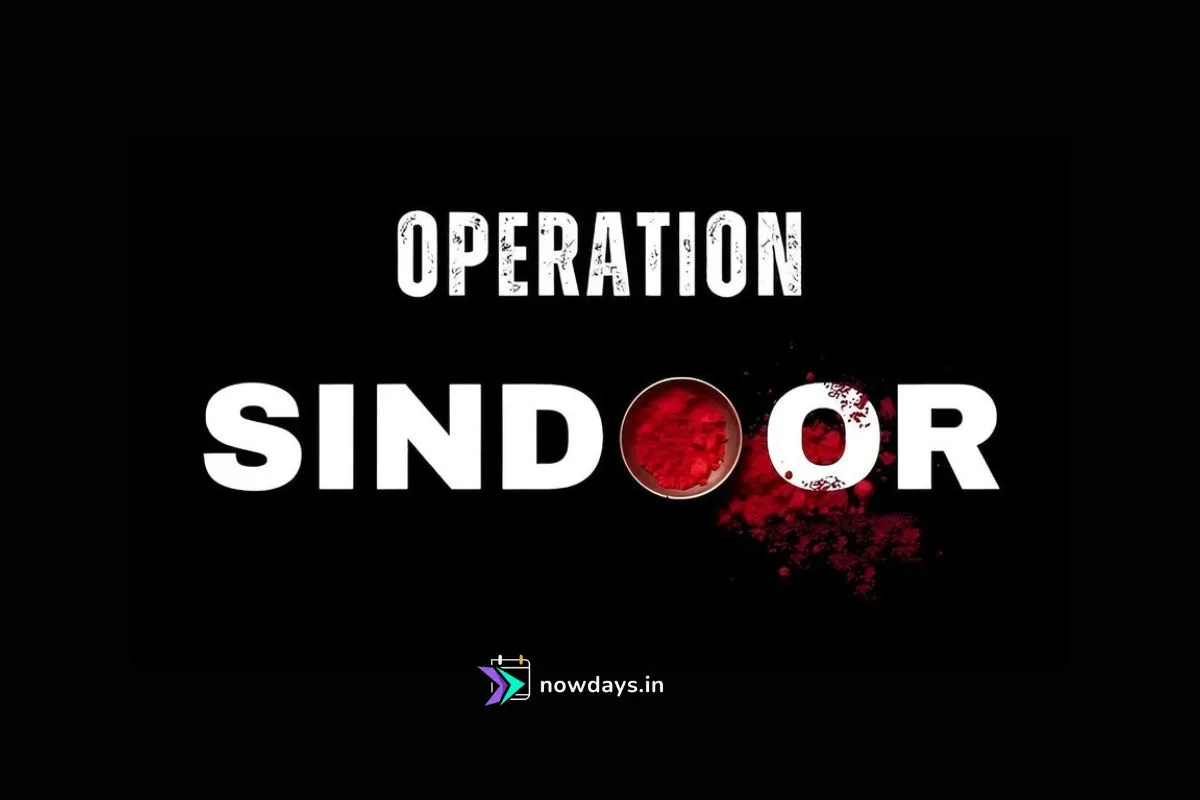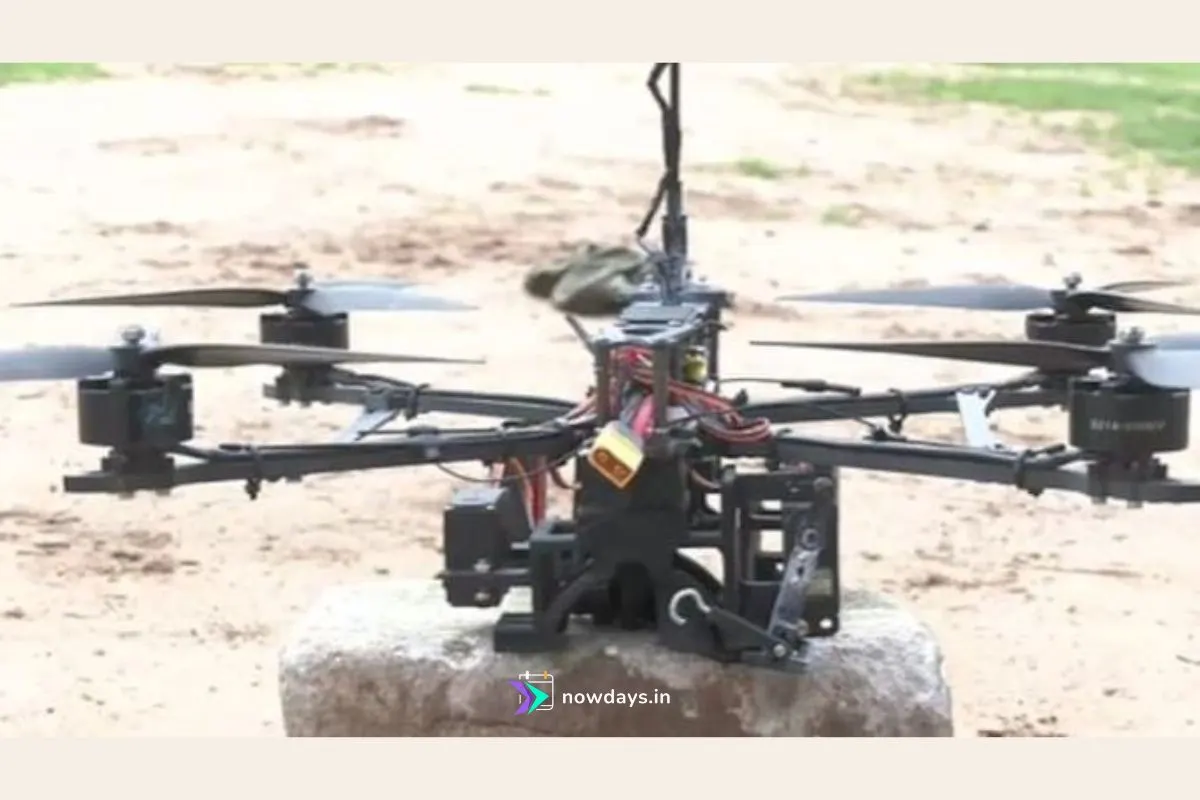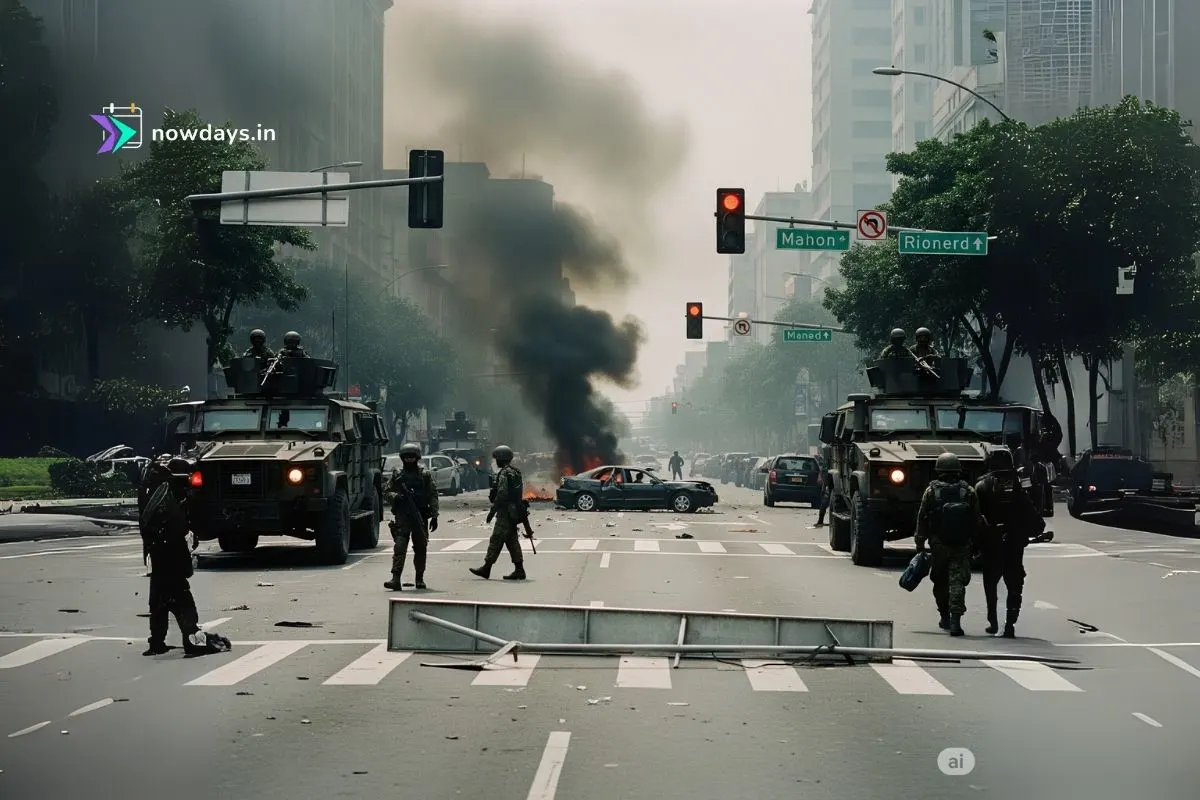On March 14, 2025, a fire incident at the official residence of Justice Yashwant Varma, then a sitting judge of the Delhi High Court, led to the discovery of a substantial amount of cash. This incident quickly ignited significant public and media controversy, prompting the Supreme Court to initiate a rigorous internal investigation.
Regarding the specific amount, while initial unconfirmed media reports estimated the figure to be “close to Rs. 15 crore”, the Supreme Court-appointed three-member inquiry committee, following an exhaustive investigation, definitively confirmed the involvement of
₹4 crore in partially burned notes. This latter figure represents the most precise amount officially cited by the investigative body.
Concerning the accountability of this cash, the inquiry committee unequivocally concluded that the funds were unaccounted for. The committee’s comprehensive findings dismissed Justice Varma’s assertions of a conspiracy and his denial of knowledge regarding the cash. It established that he maintained “undeniable control” over the storeroom where the cash was found and failed to provide any plausible or legitimate explanation for its presence or the subsequent alleged removal of some notes.
The committee’s findings of “serious misconduct” culminated in a recommendation for Justice Varma’s removal from office. As a direct consequence, he was transferred to the Allahabad High Court and subsequently debarred from judicial work. Impeachment proceedings have since been initiated, marking a rare and significant moment for judicial accountability in India.
The Incident and Initial Discovery
The controversy surrounding Justice Yashwant Varma began with a fire incident at his official residence in Delhi on March 14, 2025. At the time of the blaze, Justice Varma was reportedly in Madhya Pradesh with his wife, while his elderly mother and daughter were present at the Delhi residence. His personal secretary promptly alerted the Delhi Fire Brigade, and the fire was brought under control within a mere 15 minutes.
Discovery of Cash and Initial Response
During the firefighting operation, a “huge amount of undeclared cash” or “large quantity of notes stored in sacks” was discovered in a storeroom within the residence. Videos depicting half-burnt currency notes from the scene quickly circulated online, immediately drawing widespread public and media attention and raising serious questions about the substantial sum found at a sitting judge’s house. Fire brigade personnel reportedly informed their senior officers about the cash discovery.
Alleged Obstruction of Initial Investigation
The immediate aftermath of the discovery was marked by actions that appeared to impede a standard investigation. Following the control of the fire, Justice Varma’s personal secretary allegedly requested five policemen who had arrived at the scene to leave. The following morning, March 15, 2025, an investigating officer who attempted to visit Justice Varma’s residence was reportedly sent away and asked to return later.
A critical omission was the Delhi Police’s failure to prepare a Panchnama, an official record of seizure, on the night of the incident. Furthermore, the daily diary registered at the Tughlaq Road police station initially made no mention of the cash recovery. Delhi Police Commissioner Sanjay Arora was reportedly informed about the incident eight hours later, on March 15, after which he conveyed the information to senior officials in the Union Home Ministry and, subsequently, Delhi High Court Chief Justice Devendra Upadhyay. The matter only became public on March 21, a full seven days after the incident, sparking significant controversy.
This sequence of events, including the alleged dismissal of police personnel, the delayed access for investigators, and the initial omission of the cash discovery from official records, collectively points to a deliberate attempt to control information and obstruct an immediate, standard law enforcement investigation.
This delay and alleged suppression created a critical window during which crucial evidence, such as the cash itself, could be, and reportedly was, compromised or removed. This pattern of initial obstruction and delayed official response highlights a systemic vulnerability in how incidents involving high-ranking judicial officials are handled. It raises profound questions about the immediate impartiality of law enforcement when faced with such a scenario and the potential for the misuse of influence to circumvent standard investigative procedures. Such actions significantly erode public trust in the judiciary’s commitment to the equal application of the law and its ability to hold its own members accountable without extensive external pressure or media scrutiny.
Judicial and Public Reaction
In response to the escalating controversy, Chief Justice of India (CJI) Sanjeev Khanna took swift action, constituting a three-member committee on March 22, 2025, to conduct an internal investigation into the matter. The Supreme Court Collegium, expressing concern over the incident, proposed Justice Varma’s transfer to the Allahabad High Court. The Supreme Court later clarified that this transfer was “independent and separate” from the ongoing in-house inquiry. Furthermore, on March 28, 2025, the Supreme Court refused to consider a petition demanding the registration of an FIR against Justice Varma, stating that the petition was filed prematurely as an in-house investigation was already underway.
The Cash Discovery: Reported Amounts and Official Confirmations
The exact amount of cash discovered at Justice Varma’s official residence has been a subject of varying reports, necessitating a clear distinction between initial unconfirmed estimates and the definitive findings of the official inquiry.
Initial Unconfirmed Estimates
Early media reports following the incident provided preliminary figures, with some estimating that “close to Rs. 15 crore” were found at Justice Varma’s residence. However, it was explicitly noted that this specific figure “has not been officially confirmed”. These initial reports likely stemmed from preliminary observations made during the chaotic environment of a fire incident, potentially leading to speculative or exaggerated figures in the immediate aftermath.
Official Inquiry Findings and Confirmed Amount
The Supreme Court-appointed three-member panel, after conducting its thorough and detailed investigation, provided a more precise and authoritative figure. Its findings confirmed that “₹4 crore in partially burned notes” were involved in the incident. This figure, emanating directly from the official judicial probe, stands as the most authoritative and confirmed amount.

The distinction between the initial, higher estimate and the later, more specific finding by the probe panel is significant. The initial, higher figure likely arose from immediate, chaotic observations during the fire, potentially amplified by early media reporting. In contrast, the “₹4 crore” figure is presented as a direct outcome of the official, structured, and internal judicial inquiry committee’s findings, which involved extensive witness interviews (55 witnesses) and a detailed 64-page report.
This indicates a process of verification and refinement of information. This divergence highlights the inherent challenges in establishing precise facts in the immediate aftermath of such incidents, especially when official channels are initially circumvented.
For a comprehensive report, it is critical to prioritize the officially confirmed figure from the judicial inquiry over preliminary, unverified estimates. This distinction not only ensures factual accuracy but also implicitly critiques the potential for early media sensationalism to distort the scale of an incident before formal assessment. It underscores the importance of rigorous investigation in establishing reliable facts.
The table below summarizes the reported cash amounts:
| Category | Amount | Supporting Information |
| Initial Media Estimate (Unconfirmed) | Close to Rs. 15 crore | Based on initial reports; figure not officially confirmed |
| Supreme Court Inquiry Committee Finding (Confirmed) | ₹4 crore | Amount in partially burned notes, confirmed by official probe |
Qualitative Descriptions of the Cash
Beyond specific numerical figures, various sources describe the cash in qualitative terms that consistently emphasize its substantial nature. It was referred to as a “huge amount of undeclared cash”, “piles of burnt Rs 500 notes” , “sacks of cash being burnt”, a “large pile of currency notes”, “reportedly stacked 1.5 feet high”, and “piles and sacks of half-burnt currency notes, mostly in Rs. 500 denomination, scattered across the store room”. These descriptions, further corroborated by visual evidence such as videos and photographs included in the inquiry report, collectively underscore the significant quantity of currency involved in the incident.
Investigation and Findings: Was the Cash Unaccounted For?
The central question following the cash discovery was whether it was truly unaccounted for. This was the primary mandate of the Supreme Court-appointed inquiry committee.
Formation and Mandate of the Inquiry Committee
The three-member committee was formally constituted by CJI Sanjeev Khanna on March 22, 2025, specifically to investigate the allegations against Justice Varma. Its distinguished members included Chief Justice Sheel Nagu of the Punjab & Haryana High Court, Chief Justice G.S. Sandhawalia of the Himachal Pradesh High Court, and Justice Anu Sivaraman, a judge of the Karnataka High Court. The committee was tasked with determining the veracity of the allegations of ‘judicial misconduct’ and assessing if removal proceedings were warranted. Over a rigorous 10-day period, the committee conducted a thorough investigation, interviewing a substantial number of 55 witnesses, including Justice Varma’s daughter, and meticulously inspecting the site of the incident. The committee subsequently submitted a comprehensive 64-page report to President Droupadi Murmu and Prime Minister Narendra Modi.
Committee’s Findings on Presence and Control of Cash
The inquiry “undeniably established” that a substantial amount of cash was indeed found at Justice Varma’s official residence. The report explicitly stated that “cash/money was found in the store room of 30 Tughlak Crescent, New Delhi officially occupied by Justice (Yashwant) Varma”. Crucially, the committee found that Justice Varma had “undeniable control” or “covert or active control” of the storeroom where the cash was discovered. This finding directly contradicted Justice Varma’s earlier claim to the Delhi High Court Chief Justice that the storeroom was merely a “general dumping area”. The committee further concluded that the sum was “substantial” and “could not have been placed in the room without the family’s consent”.
Evidence Presented by the Committee
The committee’s conclusions were supported by a robust body of evidence:
- Eyewitness Accounts: Multiple witnesses, including fire and police personnel, provided corroborative testimony. They described seeing a “large pile” or “piles and sacks of half-burnt currency notes, mostly in Rs. 500 denomination, scattered across the store room”. One witness specifically recounted seeing a “large pile of cash only of Rs. 500/- denomination lying on the floor”.
- Visual Evidence: The Supreme Court’s internal inquiry report included compelling pictures and video footage of the burnt currency notes found at Justice Varma’s residence.
- Circumstantial Evidence: The committee found “strong inferential evidence” that burnt currency was removed from the premises in the early hours of March 15, 2025, after fire personnel had left. Justice Varma’s Private Secretary, Rajinder Singh Karki, was identified as a key individual allegedly involved in this removal.
Justice Varma’s Defense and the Committee’s Rejection
Justice Varma consistently denied all allegations, stating unequivocally that “no cash was ever placed in that storeroom either by me or any of my family members” and dismissing the suggestion as “totally preposterous”. He claimed he was in Bhopal at the time of the fire and expressed apprehension of a conspiracy against him. He also raised questions about why Delhi Police and Delhi Fire Service personnel, who discovered the cash, did not seize it or prepare a ‘panchnama’.
Read more: A Silent Protest? Vice President Dhankhar’s Resignation Questions BJP’s Grip on Power
However, the inquiry committee explicitly dismissed his conspiracy theories and found his explanations “inadequate”. The report concluded that Justice Varma “failed to account for the said cash/money”, asserting that once the presence of the burnt cash was established, the burden shifted to him to provide a plausible explanation. His defense, characterized as a “flat denial and raising a bald plea of conspiracy,” was deemed insufficient.
This rigorous investigative process, involving extensive witness interviews and direct evidence, systematically refuted his defense. The committee’s thoroughness allowed it to conclude that the obligation to explain the cash shifted to Justice Varma, and his inability to provide a credible, evidence-backed explanation, beyond mere denial, led directly to the finding that the cash was indeed unaccounted for. This outcome sets a significant standard for what constitutes “proved misbehaviour” within the judiciary, indicating that a judge’s simple denial is insufficient when confronted with strong corroborating evidence.
Furthermore, the committee noted that the notes “disappeared” and the room was “cleaned out”. There was “strong inferential evidence” that burnt currency was removed by domestic staff, including the Private Secretary. Justice Varma failed to secure CCTV footage or preserve the site. A private secretary to the judge allegedly directed fire officials to exclude any mention of the currency notes from their official report. These alleged actions of removing cash, cleaning the scene, and instructing officials to omit details constitute a pattern of deliberate obstruction of justice and potential tampering with evidence.
This active concealment significantly complicated any subsequent investigation, making it more challenging to ascertain the full extent of the cash and its precise origins. The initial failure of immediate, independent law enforcement intervention (e.g., lack of Panchnama, police being turned away) created an opportunity for this alleged evidence tampering, raising serious concerns about the integrity of the investigative process when high-ranking officials are involved. This underscores the imperative for swift, uncompromised action to preserve evidence and ensure that justice is not only done but also visibly done, without any perceived protective layers.
Conclusion on Unaccounted Nature
The committee found “sufficient substance” in the allegations against Justice Varma. It described his conduct as “unnatural,” specifically noting his failure to report the incident to authorities, secure CCTV footage, or take steps to preserve the site for investigation. The report firmly established that the money found was indeed unaccounted for, as Justice Varma could not provide a legitimate source or explanation for its presence, thereby confirming it was “truly unaccounted for.”
Judicial Proceedings and Aftermath
The findings of the inquiry committee set in motion a series of significant judicial and systemic responses, culminating in unprecedented actions regarding judicial accountability and transparency.
Recommendation for Removal and Impeachment Process
Based on its damning findings, the inquiry committee formally recommended the “removal of Justice Varma from office”. The committee explicitly stated that his actions “undermine public confidence in the judiciary” and represent a “significant breach of the standards expected from someone holding a high constitutional office”. Following the receipt of this report, then-CJI Sanjeev Khanna recommended the initiation of impeachment proceedings against Justice Varma to President Droupadi Murmu and Prime Minister Narendra Modi.
Under the Indian Constitution, a Supreme Court or High Court judge can be impeached on grounds of “proved misbehaviour or incapacity” through a special majority vote in Parliament. Parliamentary proceedings are anticipated, with a motion for his removal expected to be introduced in the Monsoon Session. Notably, Congress Members of Parliament have indicated their willingness to sign the motion, which is required to set up a statutory panel under the Judges Inquiry Act.
Immediate Consequences for Justice Varma
Prior to the impeachment recommendation, Justice Varma was transferred from the Delhi High Court to the Allahabad High Court. Furthermore, the Chief Justice of the Allahabad High Court was instructed not to assign any judicial work to Justice Varma “for the time being”, effectively debarring him from judicial duties. He was also specifically instructed not to dispose of his mobile phone or delete or modify any call records, messages, or data from it.
Justice Varma’s Challenge to the Inquiry
Justice Varma has vociferously contested the findings of the inquiry committee, labeling the entire process as “fundamentally unjust”. He has subsequently approached the Supreme Court, seeking to quash the in-house inquiry panel’s report and challenge the May 8 recommendation for parliamentary impeachment proceedings made by former CJI Sanjiv Khanna. His legal defense team, which includes senior advocates like Kapil Sibal, has criticized the panel’s process, asserting that its conclusions about his guilt are “mere surmises without evidence”.
Significantly, Justice Varma has also challenged the constitutional validity of the in-house procedure itself, arguing that it constitutes an “extra-constitutional mechanism” that unlawfully usurps the exclusive role of Parliament in the removal of judges as stipulated by Articles 124 and 218 of the Constitution. This legal challenge, coupled with the high-profile nature of the incident, placed the existing judicial accountability framework under intense public and legal scrutiny, exposing potential procedural ambiguities or a perceived lack of transparency within the system.
Broader Systemic Responses to the Incident
In an “unprecedented move”, the Supreme Court, amidst the controversy surrounding Justice Varma, initiated steps to publicly disclose the asset declarations of all its judges on the court’s official website. This decision marks a significant departure from previous practice, where asset declarations were mandatory to the CJI but public disclosure was optional.
This decision represents a direct, proactive institutional response to concerns about opacity highlighted by this case. It signifies the Supreme Court’s recognition that maintaining public trust requires greater openness, extending beyond mere internal investigations. This incident, therefore, is actively shaping the future of judicial ethics, governance, and accountability in India, potentially leading to more robust, statutory, and transparent mechanisms for addressing judicial misconduct.
The investigation into the cash discovery at Justice Varma’s official residence has yielded definitive answers regarding the amount found and its accountability, while also triggering profound discussions and actions concerning judicial integrity and transparency in India.
The exact amount of cash confirmed by the Supreme Court-appointed inquiry committee was ₹4 crore in partially burned notes, discovered during a fire at Justice Yashwant Varma’s official residence on March 14, 2025. While initial unconfirmed media reports cited higher figures, the committee’s finding stands as the most authoritative and verified amount.
Read more: Jagdeep Dhankhar’s Tenure: Who Could Be India’s Next Vice President?
Crucially, the cash was definitively deemed unaccounted for by the inquiry committee. Despite Justice Varma’s consistent denials and claims of a conspiracy, the committee found compelling evidence of his “undeniable control” over the storeroom, the physical presence of the cash, and his unequivocal failure to provide a credible or legitimate explanation for its source or its alleged subsequent removal. His conduct, including his failure to report the incident or preserve the scene, was explicitly termed “unnatural”.
The Justice Varma case has propelled the issue of judicial accountability to the forefront of national discourse, exposing significant challenges in the immediate handling of such high-profile incidents by law enforcement and highlighting perceived limitations of the existing “in-house mechanism” for addressing judicial misconduct. The stark perceived disparity in treatment between Justice Varma and a “common man” in similar circumstances has underscored the critical need for uniform and equitable application of the law, regardless of an individual’s position or influence.
Crucially, the incident has served as a powerful impetus for greater transparency within the Indian judiciary, most notably culminating in the Supreme Court’s unprecedented decision to publicly disclose the assets of all its judges. This institutional response signifies a proactive step towards enhancing public trust and combating opacity.
The ongoing impeachment proceedings against Justice Varma and his persistent legal challenge to both the inquiry report and the constitutional validity of the in-house procedure itself will undoubtedly shape future discussions and potential reforms concerning judicial independence, ethics, and accountability in India. This complex case is poised to be a landmark in Indian judicial history, influencing policy, legal precedents, and public perception for years to come.









1 thought on “Justice Varma’s Storeroom Held ₹15 Crore in Cash, Claim SC Panel – No Records to Justify”